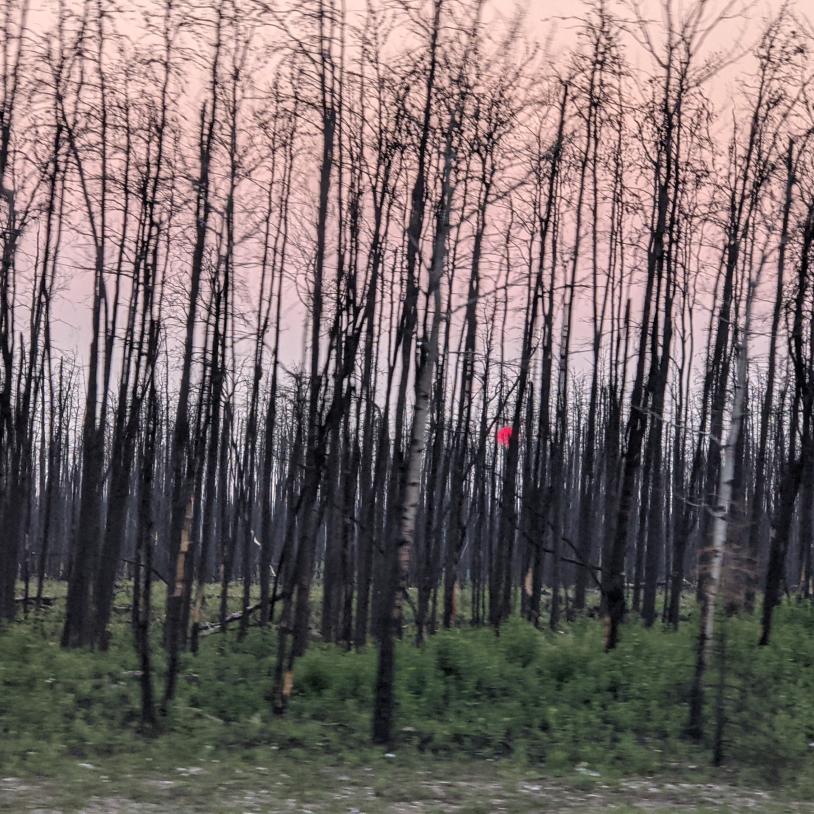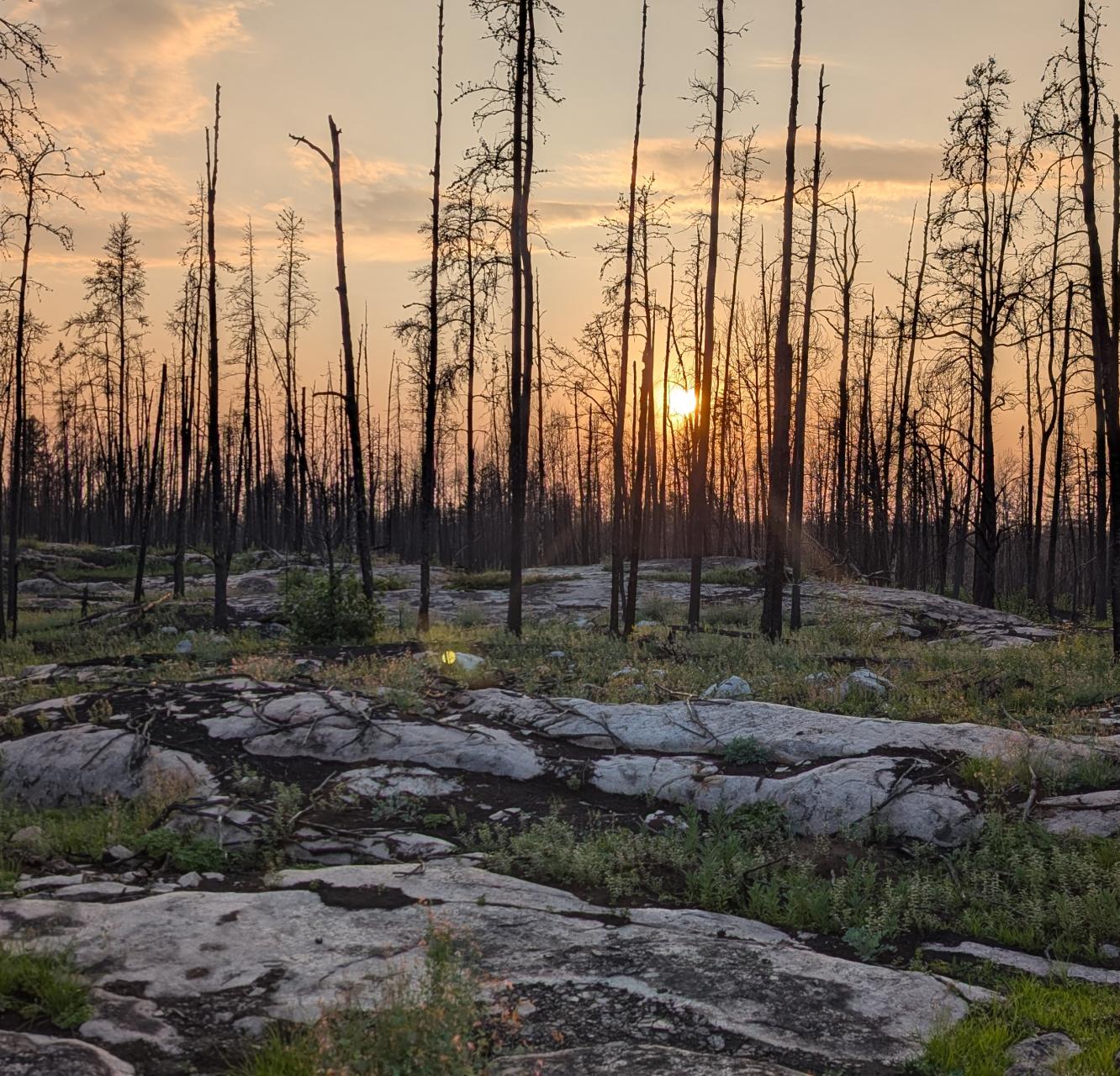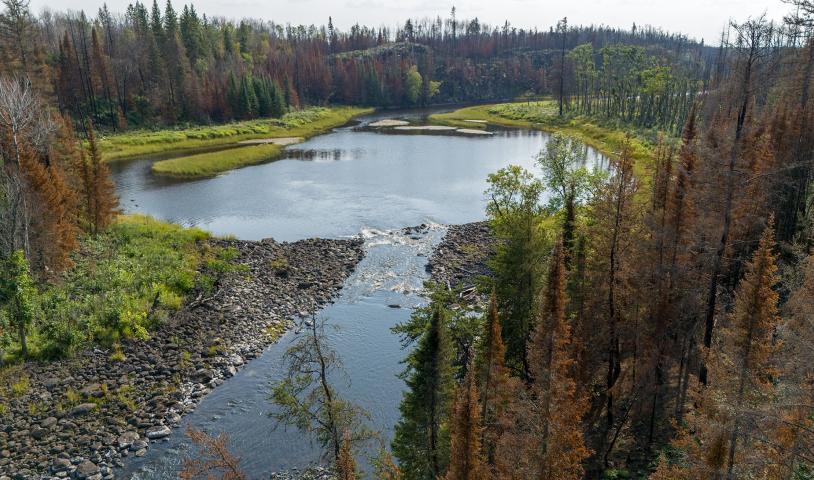Manitoba's Road to Resilience
Tuesday, March 2, 2021
Introduction
Given the current global political reality, there is serious doubt that the world will take the dramatic action required to reduce greenhouse gas emissions and remove carbon from the atmosphere at the scale and timeframe required by
the IPCC 1.5°C Report.
Many Manitobans recognize the primary consequences of climate change (severe weather, floods, droughts, fires). Those same Manitobans see that those consequences have costs that are rising. What many people may not realize is that our ability to function and survive as a society is at risk.
Other disturbances (food shortages, climate migration, global conflicts) are exacerbated by climate change. The consequences of these disturbances may first be felt elsewhere, but we will feel them here due to their impacts on the global economy, supply chain, and availability and cost of obtaining financial credit.
As long as we are dependent upon imported food and global supply chains for energy and essential goods, we are at risk. We are best off if we can provide for our essential needs ourselves.
Most governments are mainly concerned with being re-elected. Under the pretext of being “practical”, they have chosen not to publicly discuss the urgency and scale of work required to adequately address the climate crisis. It is up to civil society (the community) to think at this level and to show the way (or at least a way). We can “think the unthinkable.”
The objective of this document is to provide a pathway to full decarbonization in Manitoba - zero greenhouse gas emissions
by 2050.
As we build that pathway we will be building our local resilience.
Resilience means providing for our essential needs ourselves
without fossil fuel.
To achieve true and adequate resilience, these are Manitoba’s essential objectives:
Food – Feed ourselves locally without fossil fuel fertilizers or diesel for machinery
Shelter – Heat all of our buildings (old and new) affordably without natural gas
Transportation – Move all goods and people without gasoline or diesel
Our hydroelectric resource will be a big part of building that
resilience:
Energy - Develop and use our electricity resource
effectively, efficiently, and affordably to meet those
other three objectives
We must become resilient. That is where our pathway leads.
Audience
This pathway document is intended to define a set of recommendations for consideration by, and to stimulate a dialog among, concerned and informed Manitobans. The intention is that elected representatives, civil servants, and public policymakers will develop implementation plans to achieve the recommendations.
There are three key audience groups:
Public – The public needs to support the pathway & demand its implementation
Practitioners – Professionals & civil servants need to detail and implement the pathway
Policymakers – Elected officials need to set policy and regulation to support the pathway
The structure of the pathway (see below) allows for the contents
to be broken up into “bite size” pieces - to be consumed by the
appropriate audience at the appropriate times.
Chapters
This document has seven chapters after this introduction: Four technical chapters focused on greenhouse gas emission reduction and building resilience and three foundational chapters devoted to economic, generational, cultural, and ecological justice.
Technical Chapters
1. Buildings – How we can heat and cool all of our buildings (old and new) without natural gas.
2. Transportation – How we can move all goods and people without gasoline or diesel.
3. Food & Agriculture – How we can feed ourselves locally without fossil fuel fertilizers or diesel for machinery. This chapter includes ways to manage livestock and organic nutrients to build soil carbon.
4. Energy – How we will be able to generate and distribute sufficient local energy necessary to meet the requirements of the three chapters above.
Each of the four technical chapters will have two sections:
The Big Picture – This provides an overview of the current context of that topic area (i.e. the size of the problem, current greenhouse gas (GHG) emission levels, and reduction timetables).
The Pathway – This provides the key topics that need to be addressed and strategies that need to be implemented to reach zero emissions and full resilience in the topic area. Within this section will be suggestions for policy and regulation changes to give us levers to make change happen. Key Performance Indicators (KPI) will also be suggested. Such metrics will help us understand how we are doing and will help manage our progress toward the objectives.
Many of the policy suggestions in this document were derived from two Canadian Centre for Policy Alternatives (CCPA) publications:
• Change Starts Here: Manitoba Alternative Provincial Budget 2020
• Imagine a Winnipeg...2018 Alternative Municipal Budget
Foundational chapters
These chapters provide the foundation upon which the pathway must be constructed.
5. Human Impacts – How we can (and must) address the injustices of climate change. People who are most affected by climate change usually have contributed least to the causes. In this chapter, we deal with a variety of issues including health impacts, generational injustice, cultural injustice, and economic injustice.
6. Economy & Green Jobs – How we can ensure that we address economic inequality as we put people to work implementing this Pathway. (See Green New Deal)
7. Natural spaces / Wilderness – How we can ensure a livable, sustainable ecological system that functions throughout Manitoba.
Guiding Principles
This document is guided by the following principles:
• Indigenous leadership: Seek out and incorporate direction from elders and indigenous knowledge-keepers. Seek out and ensure free, prior, and informed consent. Comprising less than 5% of the world’s population, indigenous people protect 80% of global biodiversity.
• A Just Transition for workers: Provide a path for displaced
workers in fossil-fuel dependent industries to find employment
in alternative ways.
• Democratize energy and natural resources: Ensure public
ownership and control over renewable energy and publiclyfunded
responses to climate change.
• Recognize the right of nature to exist: Persist and
maintain nature’s vital cycles and support human life on
earth. Protecting, reclaiming, and expanding natural areas
is key to carbon sequestration and fighting climate change.
Biodiversity must be protected and enhanced.
• Holism: Recognize that our economy, society, natural
environment, and culture are interrelated. Action to reduce
greenhouse gas (GHG) emissions must take a holistic approach.
• Social justice: Populations socially excluded by
discrimination based on race, gender, ability, sexual
orientation, religious affiliation, and age must be part
of climate resilience so no one is left behind.





